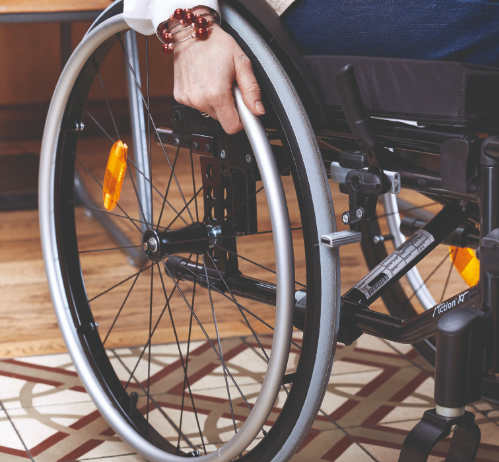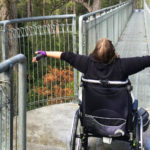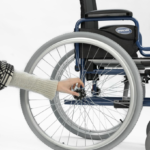Wheelchair clamps – what are they and what do they do?

I must admit that when I started to think about wheelchair clamps, my immediate thought was “well surely a clamp is just a clamp…” but the world of securing wheelchairs with clamps, has more to it than first meets the eye.
Wheelchair users need to be certain that they are safe and secure in the transport available. Many of you use a variety of transportation when at home and on holiday. If you can safely transfer in and out of your wheelchair into a car seat, that’s best. Then, the chair can then be folded and stored in the car boot or elsewhere.
But many wheelchair users need to stay in their wheelchair and both they and the provider of the transport and/or carer need to understand how to secure the wheelchair safely. This is where a wheelchair clamp or other form of securing system is pivotal.
Wheelchair clamps (or tie-downs as they are sometimes known as) are any type of restraint equipment used to secure wheelchairs in a vehicle. For example, they include ratchet clamps, 4 point webbing and any other type of securing equipment.
4 point webbing clamps are generally for use on wheelchairs up to 120kg. They comprise of a pair of non-adjustable front straps and a pair of adjustable rear straps (either karabiner or snap lock). 4 point restraints are very versatile and fit the majority of wheelchair models.
Ratchet clamps are a system that can be used with a pair of non-adjustable straps at the front and a pair of retractable carabiner straps at the rear. The restraints are tensioned quickly and easily and because of their size, allow more room for other wheelchairs on the vehicle.
However, the systems mentioned above are for reference purposes only; please refer to the Owner’s manual and how to attach the wheelchair for specific details relating to your wheelchairs requirements.
In our experience discussions about wheelchair clamps and securing systems usually arises when using a wheelchair taxi, minibus or when buying a vehicle with the intention of transporting an occupied wheelchair.
Most wheelchair taxis or private cars will have wheelchair tie-down and occupant restraint systems (WTORS) already installed, but sometimes clamps are needed as an alternative or in addition. Some wheelchairs need clamps designed solely for the individual wheelchair and you should be made aware of this when acquiring your wheelchair. Wheelchair clamps will, in general, be quick release (for safety in case of emergency situations) ratchet clamps.
The main benefit is of the ratchet clamp system is that they secure the frame from underneath and not outside the “footprint” of the wheelchair, thus saving vehicle space. Durable in design, are only suitable for use with manual chairs and they fit most standard size manual wheelchairs . Lockable ratchet clamps are preferable to those that simply hook onto the wheelchair. A non locking clamp could work itself loose and the hook could become disengaged from the frame. The clamps should be fitted as vertically as possible, but a slight angle is acceptable.
Koller ratchet clamps are a popular make and mount into compatible floor rail via rail clip fittings for ease and security. The ratchet mechanism is operated via a lever, providing a simple means to tighten the hook onto the wheelchair frame. The “Swivel and Tilt” mechanism allows the clamps to fit a variety of wheelchairs with standard quick release provided.
Ratchet clamps are not a universal solution however and it is important to note that it is not suitable to use ratchet clamps with powered wheelchairs. A four-point webbing restraint system is now regarded as the most suitable means of securing powered wheelchairs and their occupants.
There is some formal guidance on the use of clamps and other securing systems. In the UK, government advice and guidance from the Medicines and Healthcare Products Regulatory Authority (MHRA) provide some evidence to fall back on should you come up against any problems.
Find your countries regulations on wheelchair clamping on relevant government, council or health and safety regulation websites. Refer to your Invacare rep or consult the User Manual to ensure that the wheelchair is suitable for transportation.
Safe travels!
User needs to be secured with the 3 point belt of the vehicle. Invacare presume Medical professional and care team have made an individual assessment of the user to determine the patient’s risk level or therapy requirements. Reader should get in contact with a Medical professional prior to acquiring the medical equipment.







